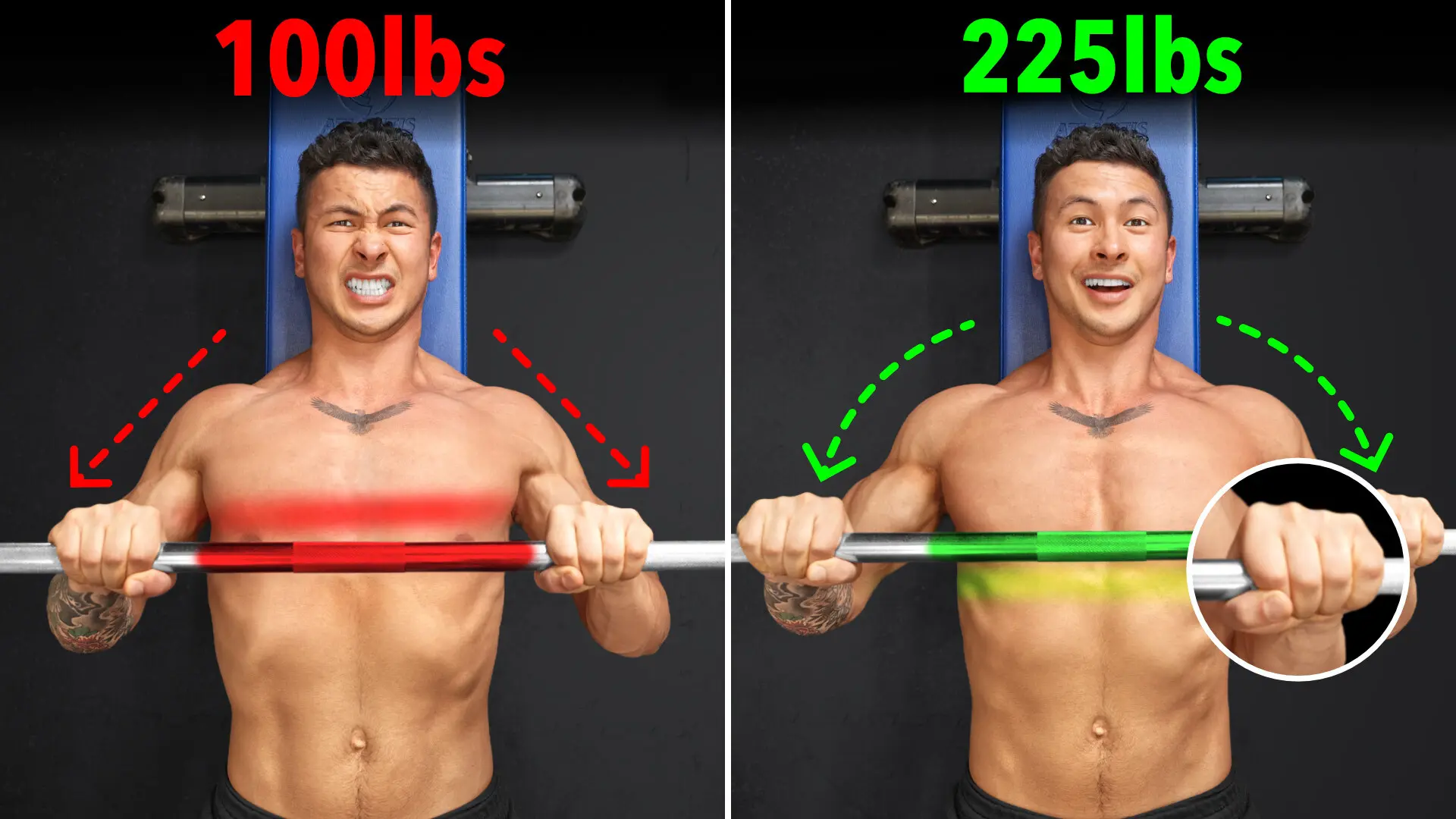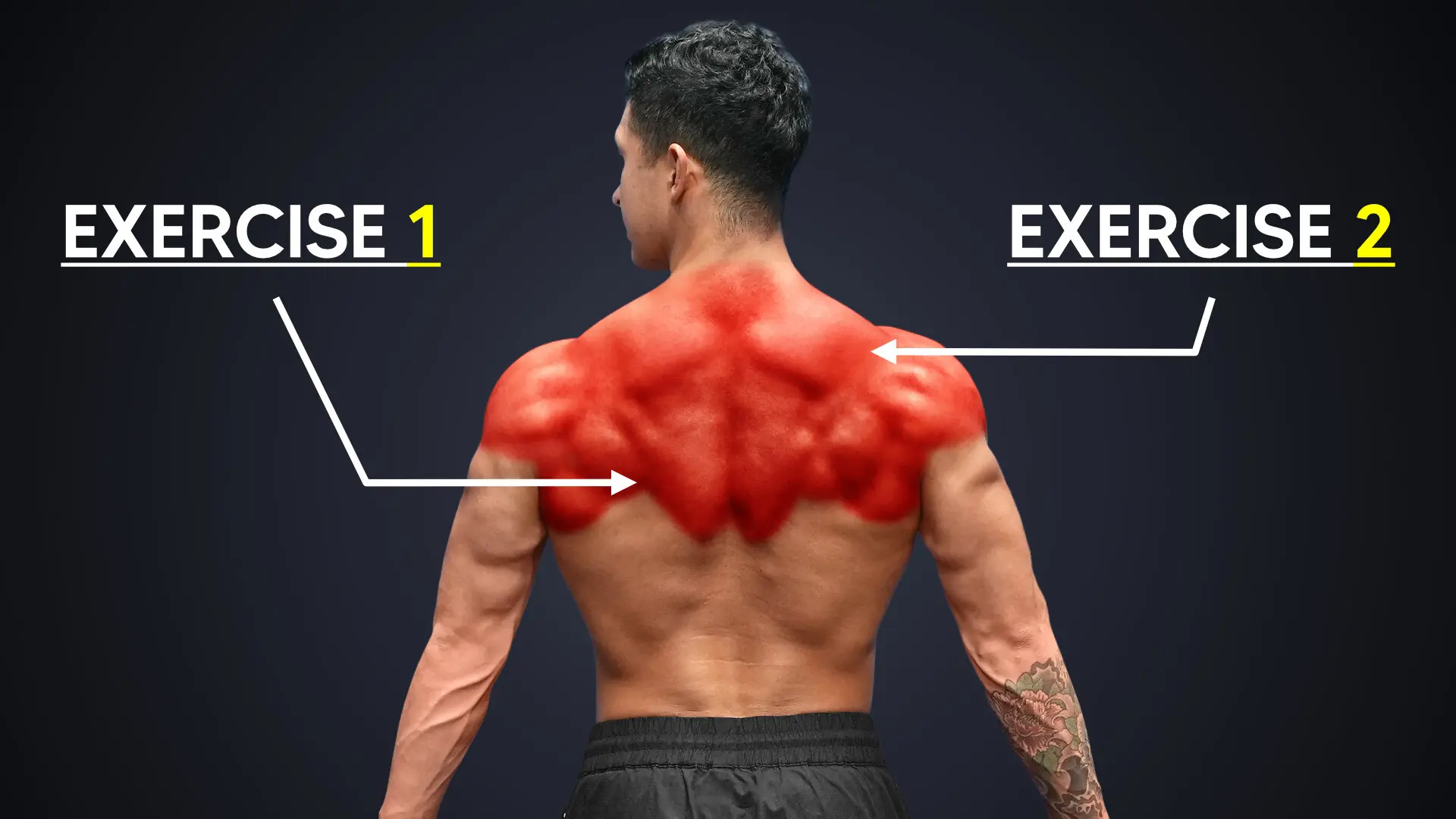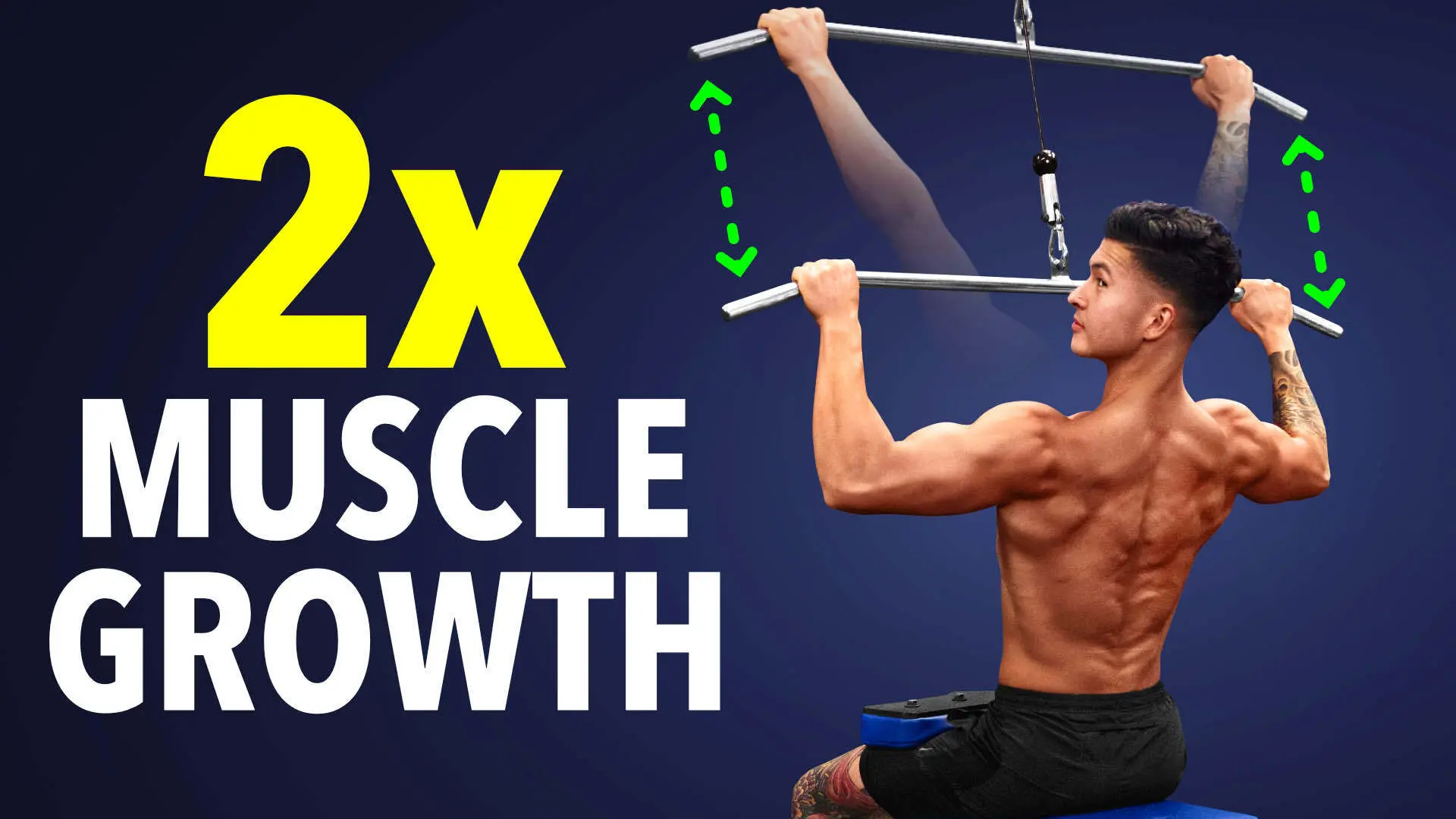
How To Gain Muscle Almost Twice As Fast (New Workout Technique/Method!)
Here's how to gain muscle almost twice as fast using "bad form". Yes, you read that right — more details below.
Can “bad form” help you build more muscle?
We all know that guy who says he can do 30 pull-ups, and then when he actually does them, none of them count.
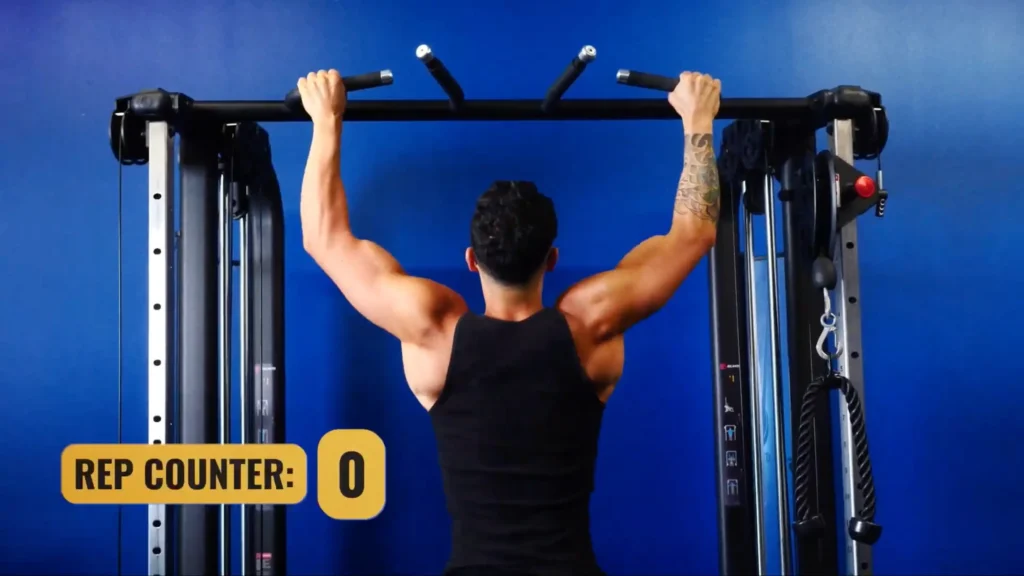
But what if he’s onto something?
Today, I’ll show you why new research suggests using “bad form” can help you put on muscle almost twice as fast. And it’s actually pretty simple: it’s all about the stretch.
Understanding "The Stretch"
“Taking your current training and focusing more on the stretch could take some of your lagging muscles to be a lot bigger and take some of your currently-pretty-good muscles and take them to the next level.”
That’s Dr. Milo Wolf.

The world’s leading expert on this new area of research and how to gain muscle fast by using this technique.
"There seems to be something unique about training a muscle group in their stretched position”
“There are about 10 to 12 studies, and in many of these studies, you see around double the growth by focusing on the stretch versus missing out on the stretch.”
Avoid These Common Stretch Technique Mistakes
But here’s the problem: most people don’t know how to target “the stretch” properly.
And it’s not just beginners who make this mistake. Often, the stronger you get, the easier it is to neglect it.
First, we’ll dive into how to fix this common mistake, and later, I’ll show you some new “stretch” techniques that have been growing my muscles faster than anything I’ve tried in the past.
"For many exercises like the bench press, squat, and the RDL, if you're using more weight and therefore unable to get into that stretched position, you will be limiting how much growth you see."
But why does more weight stop you from getting into the stretched position?
Well, it doesn’t have to.
But just think about guys who stop halfway when squatting or don’t touch their chest when doing the bench press.
Assuming they have the mobility for it, why aren’t they going all the way down?
"It's because the body wants to avoid the most painful part of the exercise.”
But not going all the way down isn’t the only mistake people tend to make.
“Yeah, and I similarly see also with tempo. For example, in the bench press, they'll take a few seconds at the top of each rep to kind of reset, maybe rest for a little bit, and then go for another rep."
"But conversely, they'll often be super quick in the stretch position. If anything, I would urge towards the opposite. I would control the load more in a lengthened position, maybe even pause in a lengthened position, and really try to be explosive out of that stretch position.”
So lowering the weight to get deeper and controlling that bottom position is definitely one way to improve the stretch and get more growth from your workouts.
But there’s more to it.
How To Gain Muscle Fast With The Stretch Technique
To get the best results, you should also add 2 key techniques that most people have never considered.
#1: Choose Exercises That Emphasize The Stretch
The first one is obvious: choose exercises that stretch your muscles the most.
For example:
“In the barbell bench press, you're often limited in how much of a stretch you get on the pecs by when the barbell touches your chest."
"If they then switched from a barbell bench press to a dumbbell bench press, you're able to get a bit deeper."
"But then, if you want to take the stretch even further, you could do something like a deficit push-up where there is essentially no longer a restriction on when the ground touches your torso, and so you can get as deep as you want for your pecs, you get a maximum stretch on them and probably build more muscle.”
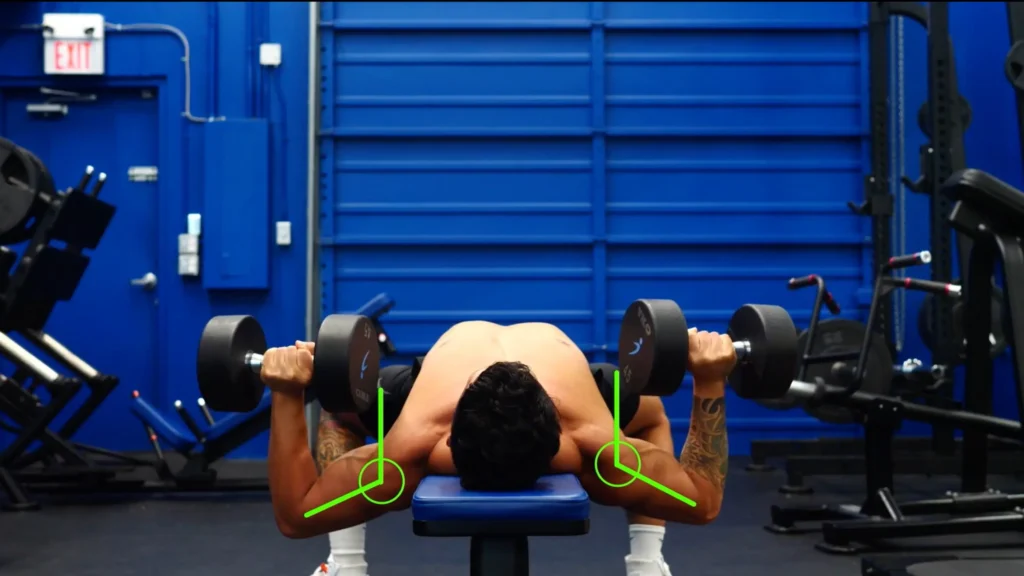
Before you change your whole routine, there’s something else you need to know. There’s a second way to use “the stretch” that’s less obvious but might be even more effective.
#2: Pick Exercises That Are Most Challenging In The Stretched Position
Let’s use an example: choosing an exercise for your biceps.
Compare the preacher curl to a regular incline curl.
Technically, the incline curl stretches the biceps more than the preacher curl because the arm is positioned behind the body.
But there’s one subtle difference.
Incline curls are most challenging in the middle when the biceps are contracted. Whereas preacher curls are most challenging near the bottom when the biceps are more stretched.
This difference is thought to be why, in a 2023 study, preacher curls led to more growth than incline curls, especially in the bottom of the biceps.
“The main thing might be getting a decent stretch and making that stretch challenging."
"If I had to pick one right now, I would pick resistance in the stretch position over just maximizing the stretch.”
Exercises That Challenge Your Muscles In The Stretched Position
Now, aside from preacher curls, exercises that do a great job of challenging your muscles in the stretch include:
- Chest: Dumbbell flyes
- Triceps: Overhead extensions
- Rear delts: Reverse cable flyes
- Shoulders: Behind-the-body lateral raise, with the cable set at wrist height
Unfortunately, there’s no really good back or calves exercise that challenges the “stretch” and we’ll talk about the “fix” for this in a minute.
But basically, anytime you try an exercise, think about this.
“If the stretch position feels really easy like there's barely any weight there, that's not going to be the best movement for hypertrophy."
"If, on the other hand, the stretch position feels very difficult, something like a dumbbell fly where it's really challenging in that stretch position, that is going to be a better exercise in all likelihood for hypertrophy.“
Upcoming Research On The Stretch
However, although the research is very promising, it’s limited, and we don’t yet know if only certain muscles benefit from being challenged in the stretch. But I’ve personally become so fascinated with this area of research that I’ve decided to take matters into my own hands.
Starting in September, I'll be funding and helping run a unique study at the University of British Columbia to determine how much challenging your muscles in the stretched position leads to growth.
We're using 3 custom machines that, by the switch of a pin, can make each exercise more difficult either in the stretched or the contracted position.
We’re testing the shoulders, glutes, and chest, 3 of the most understudied muscles due to the high cost of using MRI for proper measurement.
It’s a big project to take on, but it'll help shape how we work out and the exercises we choose to maximize growth.
Science has done so much for me and my channel, so getting involved in advancing the field is the least I can do to give back.
Milo and I have already placed our bets on the outcome, but I'll keep you guys updated.
"Bad Form" Can Help You Build Muscle Faster
But what I really want to focus on now is the counterintuitive lesson you can take away from all this “stretch” research: how you can use “bad form” for faster muscle growth.
Remember this guy?
Well, he was actually onto something.
How To Gain Muscle Fast: Use Partial Reps
“If you're doing the wrong type of half reps, you are hurting your muscle building. However, we do have research on the opposite of that."
"Where you do half reps in the stretched position of a movement."
"And across around 5 studies now (1, 2, 3, 4, 5), 4 studies have found more muscle growth with half reps in the stretch position compared to a full range of motion."
In other words, some reps that look “bad” might actually be good.
Think about it.
When you train certain muscles like the back or calves, where does it feel the hardest?
It’s usually at the end of the movement when your muscles are fully contracted.
But it’s really the beginning when the muscle is most stretched that’s most important for growth.
“We have research, for example, in the calves."
"When we compare it doing just the bottom half of the movement to doing a full range of motion in a study by Kassiano and colleagues, for example, we observed around twice the growth at both sites measured."
For certain exercises, which I’ll list out in just a second, replacing full reps with half reps has the potential to double your growth. But there’s another option that’s also been shown to be extremely effective.
It’s quite simple.
After you can’t do any more full range of motion reps, keep pushing past failure by doing as many half reps as you can in that stretched position.
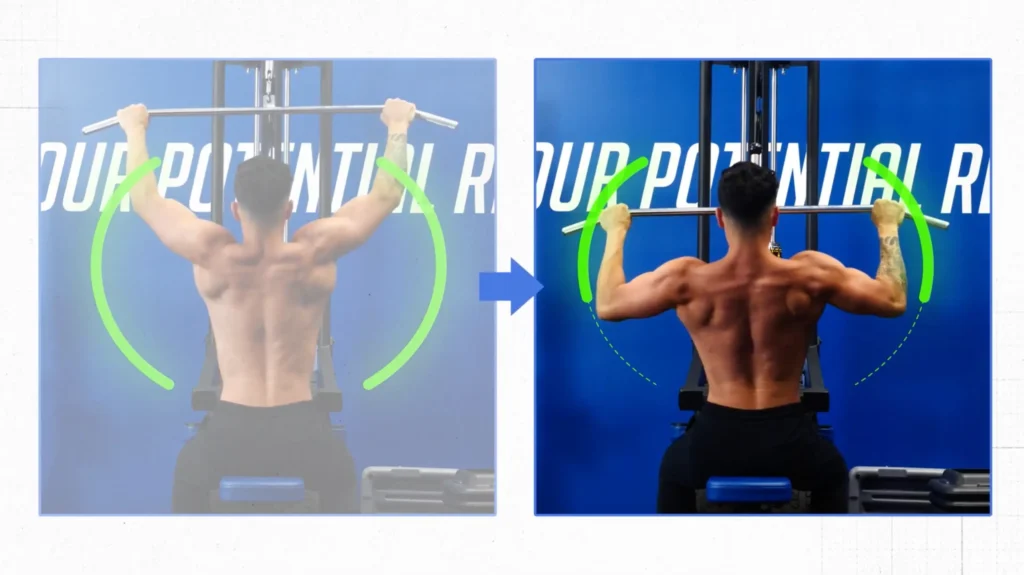
As for what exercises benefit the most from these “half rep” methods, it’s any exercise that’s hardest in the contracted position.
This includes:
- Pretty much all calves exercises
- Most back exercises (e.g., lat pulldowns and rows)
- Chest flyes
- Reverse flyes
- Dumbbell lateral raises
- Leg extensions
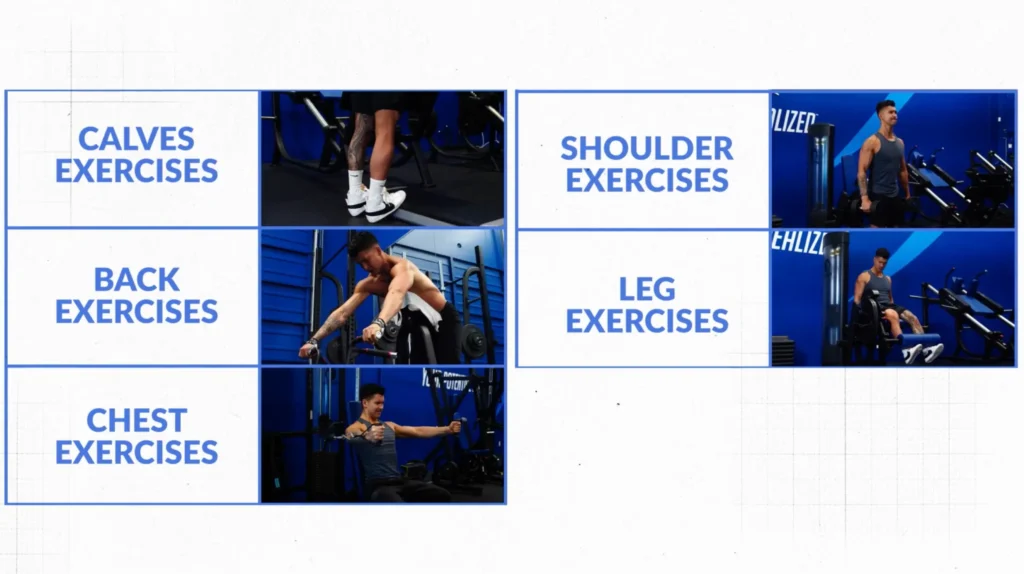
TL;DR
- Research shows training a muscle group in their stretched position could lead to almost double the growth (vs missing out on the stretch).
- How to gain muscle faster with the stretch: the most obvious technique is to lower the weight to get deeper and control the bottom position.
- Beyond that, you should also 1) choose exercises that stretch your muscles the most and 2) pick exercises that are most challenging in the stretch position.
- So, here’s how to gain muscle fast with “bad form”: replace full reps with half reps on certain exercises and push past failure by doing as many half reps in that stretched position as possible.
Want A Done-For-You Stretch-Focused Training Plan?
Now, there are various ways you can apply more “stretch” to your workouts, but rather than trying to do it all yourself, I’d highly recommend just following a proven, science-backed program that takes care of all the guesswork for you.
These programs are extremely effective yet simple to follow and are also updated whenever new research comes out.
To join today, just take our quick, free analysis quiz below to discover the best Built With Science program for you:
Click the button below to take my analysis quiz to discover the best program for you:
↓
You can also use the code “STRETCH” at checkout for 15% off.
Interested in learning more about how you could use the stretch in your workouts? Check out this delts workout or this arm workout — they have honestly grown my muscles faster than anything I've tried in the past.
Thanks for sticking to the end, and I'll catch ya next time!
By the way, here’s the article summed up into a YouTube video:


